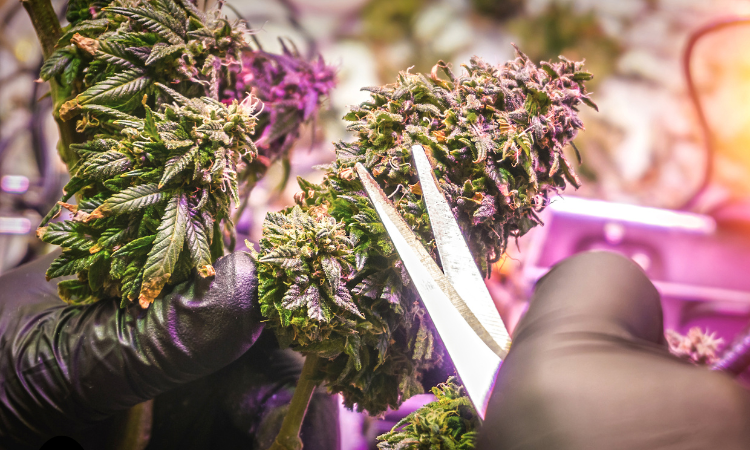The final quality and look of the collected buds are greatly influenced by the trimming process. Both manual and automatic trimming are viable methods for completing this crucial task, and each has pros and downsides of its own. The argument over manual vs automated pruning is still being debated as growers try to find the ideal ratio between yield and productivity.
Hand trimming is a time-honored method used by generations of cannabis growers. It entails carefully cutting away extra leaves and stems from harvested flowers with pruning shears or scissors. Trimmers can precisely manage the trimming process with this technology, making it possible to meticulously sculpt each bud to perfection. Because it can maintain the delicate trichomes that hold the plant’s important terpenes and cannabinoids, hand trimming is frequently recommended in order to maximize flavor and potency.
The unmatched attention to detail that hand trimming provides is one of its main advantages. Skilled trimmers can spot and eliminate any flaws or irregularities, producing a finished product that is consistent and aesthetically pleasing. Hand-trimmed buds are highly sought after by connoisseurs and discriminating buyers because to their refined appearance and thick, sticky trichome covering.
However, manual trimming takes a lot of time and energy and calls for a large manpower investment and expert labor. Many producers are investigating automated trimming as a way to boost productivity and streamline the trimming process as the cannabis market keeps growing and demand for premium flower stays strong.
Mechanized blades or tumbling motion are used by automated trimming devices, such trimmers and tumblers, to swiftly remove extra plant material from harvested buds. Large amounts of cannabis flower can be processed by these machines in a fraction of the time it would take to trim the flower by hand. Cultivators can potentially save a lot of money and boost productivity with automated trimming, especially in large-scale commercial operations where productivity is critical.
Automated trimming has limitations even with its efficiency. Opponents contend that automated trimming can be less accurate than manual trimming, increasing the risk of harming the sensitive trichomes and lowering the quality of the buds as a whole. Furthermore, some customers think machine-trimmed buds are less high-quality and associate them with a lack of skill and attention to detail.
The decision between manual and automatic trimming ultimately comes down to a number of criteria, such as the size of the operation, the intended result, and financial concerns, just like it does with any other part of cannabis growing. A lot of cultivators choose to take a hybrid strategy, saving manual clipping for premium or artisan batches that are meant for the top shelf and using automated trimming for bulk processing.
In conclusion, the debate over manual versus automated trimming in cannabis production illustrates the continuous effort to strike a balance between effectiveness and quality in a sector that is always changing. Although manual trimming is still the best method for producing highquality flowers, automated trimming is a workable way to boost output and save labor expenses. In the process of cultivating premium cannabis, growers can make well-informed decisions that complement their own priorities and goals by being aware of the advantages and disadvantages of each method.



